6 Tips to Boost Learning on Class Field Trips
“Ooh, I see a Doric column!!”
“Look, look! An obelisk!!”
Eighth graders made these happy comments one time while driving in to Washington, DC, for an end-of-year overnight field trip. They were keenly attuned to these (and other) architectural elements because I’d given them an assignment to research while visiting our Nation’s Capital.
Even though the students were initially nonplussed at having an assignment to complete during the trip, they ended up commenting that having “fieldwork” pushed them to pay more attention. And that’s one reason why I gave that assignment, in varying forms, every year after that.
Field trips are worth the effort
Field trips are a great way to extend and apply classroom knowledge and to provide out-of-the ordinary learning opportunities and real-world exposure for students.
I have been fortunate to teach in a range of schools where leaders placed a high value on field trips and other off-campus experiences. It’s certainly true that planning field trips can be challenging, detail-intensive and time-consuming, but there is always a reward in student learning.
If you find your leaders aren’t necessarily convinced that field trips are worthwhile, why not focus your proposal very specifically on student learning by incorporating an academic task into the field trip experience? Two examples from my own teaching may provide you with some ideas to add to your own field-trip successes, during the last weeks of school or anytime throughout the year. At the end, I also share six of my own lessons learned.
Field trip to Washington
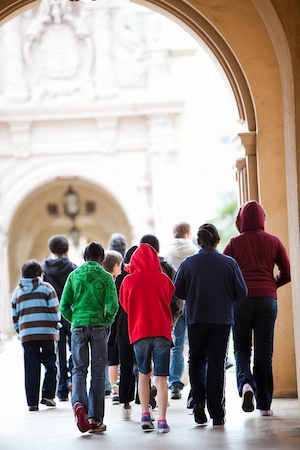 First, I’ll elaborate on the architecture assignment I designed around the field trip to Washington. Even though I taught for many years in an area that is a half-day’s drive from Washington, many students each year had never been in the District of Columbia. That was one reason I added an assignment: to structure part of the students’ experience while there. Another reason was curricular: I taught Latin, and many buildings in Washington incorporate Classical architecture.
First, I’ll elaborate on the architecture assignment I designed around the field trip to Washington. Even though I taught for many years in an area that is a half-day’s drive from Washington, many students each year had never been in the District of Columbia. That was one reason I added an assignment: to structure part of the students’ experience while there. Another reason was curricular: I taught Latin, and many buildings in Washington incorporate Classical architecture.
For the assignment, students were grouped in teams. Each team was given a list of about 15 elements from Classical architecture ranging from types of columns to a building that echoed the Pantheon in Rome. While in Washington, each team had to collect examples of 8-12 elements. Their own photos or brochures from the sites were acceptable evidence; pictures sourced from the internet or other advance preparation were not. I wanted to make sure they collected their information “in the field.”
They also needed to think about why so many of the federal buildings deliberately incorporated and reflected Classical architecture and present their findings in an essay. Once we returned to school, students had a day in class to amass and organize their images and to collaborate on their statement. They presented their projects in a format that featured both text and pictures.
While this project worked best when I was able to chaperone the Washington trip and check in with students along the way, I also assigned this project when I was not a chaperone. In that circumstance, I sent a copy of the assignment to a teacher who did chaperone the trip so at least one adult on the trip would know about the students’ assignment.
Visiting a museum exhibit
On another occasion, I designed a field trip to a special exhibit about Pompeii that focused on the volcanology of Vesuvius in addition to the artifacts from Pompeii and its environs. I previewed the exhibit in the summer before our early fall field trip so I could get a more specific sense of the exhibit after researching it on the museum’s website.
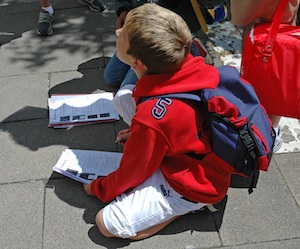 After my own visit, I decided that I needed to give my students a better background on volcanology related to Mt. Vesuvius because the exhibit put the eruption of Pompeii in the context of other natural disasters like Hurricane Katrina. My search for readings yielded an excellent but complex article on a BBC site. I designed a reading guide for students and gave them class time to read and discuss the article.
After my own visit, I decided that I needed to give my students a better background on volcanology related to Mt. Vesuvius because the exhibit put the eruption of Pompeii in the context of other natural disasters like Hurricane Katrina. My search for readings yielded an excellent but complex article on a BBC site. I designed a reading guide for students and gave them class time to read and discuss the article.
My students also had an assignment to locate one item of interest at the exhibit and to make notes about it. After the field trip, they recreated the item in various materials and wrote a museum card to go along with it. The museum card was a interesting form of short writing that called on students to synthesize their research in a few catchy sentences. When students presented and displayed their projects and museum cards in the classroom, many noted that they had not even noticed a classmate’s item while on the field trip.
For museum field trips especially, I have learned that less is more. Years ago, another teacher and I took seventh- and eighth-graders to the Metropolitan Museum of Art. We had designed the schedule for students to have focused time in the Greek and Roman galleries, and then some time to explore other galleries.
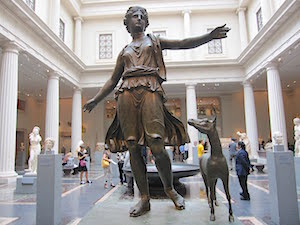 I commented to a curator who had helped us arrange the field trip that I knew there was no way the students would be able to see everything the Met had to offer, even with our advance research and planning. She said that was completely fine, and went on to explain that it is better for a student to be captivated by one item than to give a quick (and meaningless) glance to scores of items.
I commented to a curator who had helped us arrange the field trip that I knew there was no way the students would be able to see everything the Met had to offer, even with our advance research and planning. She said that was completely fine, and went on to explain that it is better for a student to be captivated by one item than to give a quick (and meaningless) glance to scores of items.
She was right, and her advice has been a guiding light to my view on field trips. The Latin saying multum in parvo means “much in little” and relates to the idea that much knowledge and understanding can be gained from focused learning and attention on even a few items.
Six Tips for Successful Academic Field Trips
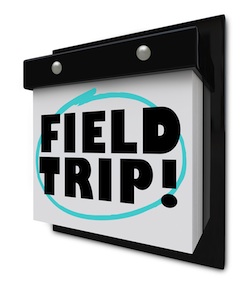 I’ve learned some other things worth sharing, along the road with my students. Here are six points to keep in mind if you are newer to pairing academic tasks with field trips:
I’ve learned some other things worth sharing, along the road with my students. Here are six points to keep in mind if you are newer to pairing academic tasks with field trips:
1. Start small. Even a very straightforward assignment will help students learn more on the field trip and have better retention and understanding. Scavenger hunts, like the one I deigned for Washington, provide a great way to give students structure and flexibility, as long as students can leave some items off their final list.
2. Spend time in class talking about the assignment before and after the field trip. Use class time to preview the trip and to state clearly to students what they will see and how that relates to the curriculum.
3. Think about group work. Oftentimes on a field trip, allowing students to work in groups can increase the conversations students have about the academic content while they’re on the road.
4. Research the sites so you know whether pencils, papers, cameras, or other supplies students may need are allowed. When you find out what is and is not allowed, share that information with students. If students can’t take pencil and paper into a site, give them time after a site—even on the bus—to jot down notes. Also remind them to make quick notes for later reference.
5. Talk with curators, docents, and other personnel at the sites in advance. If you plan far enough in advance, tell a curator that you are planning an assignment. Ask for input, anticipate constraints, and ask for the site’s help in facilitating the students’ work.
6. On multi-day field trips, check in with students each day to assess their progress. If you do not chaperone the field trip, discuss time management in advance and consider giving students a checklist.
So if you have a field trip planned for the last weeks of school, or any time of year, make sure to connect that field trip to your curriculum. Academic tasks and assignments can focus students’ experience and give them a frame through which they can explore and wonder.
Amanda Wall is an assistant professor in the Department of Teaching and Learning at Georgia Southern University, where she teaches courses in the middle grades program. She taught Language Arts and Latin in grades 5-12 for many years. Her articles for MiddleWeb can be found here.

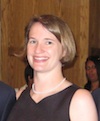


































I loved reading this post! I am a Middle School Latin Teacher and would love to hear more about how you structured your Classical Architecture Field Trip in D.C.